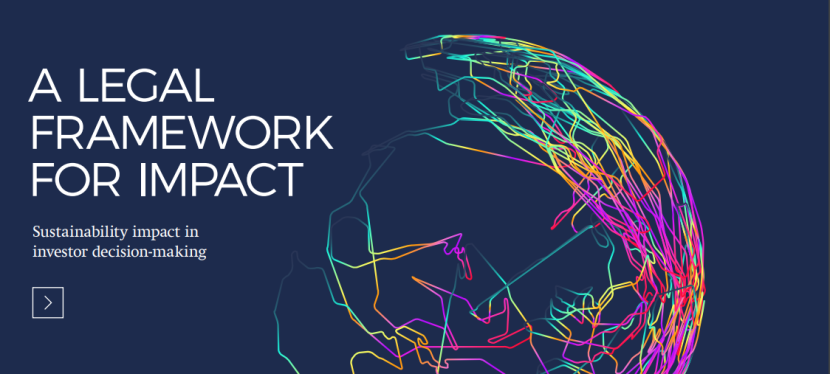By Frank Sherman
Sustainable investing has not only become mainstream in recent years; it is now recognized as a mark of prudent investment practice. US-SIF reported last year that sustainable investing in the US increased 42% over the previous two years and now represents one in three dollars of the $51 trillion in total assets under professional management. A Morgan Stanley study found that, while the market experienced extreme volatility and recession in 2020, funds focused on “on environmental, social and governance (ESG) factors, across both stocks and bonds, weathered the year better than non-ESG portfolios.” Yet there are still those who challenge the legal basis for and prudence of incorporating ESG investment strategies.
SGI members who are institutional investors, pension fund trustees, asset managers, or investment advisors must put their clients’ or beneficiaries’ interests before their own. Despite having been debunked many times, the myth that the fiduciary duty to act in the best interest of a client excludes ESG and socially responsible investing still exits. In a 2019 SGI webinar, Frank Coleman of Christian Brothers Investment Services (CBIS), referenced a 2005 study by law firm Freshfields, Bruckhaus, Deringer LLP which found investors could incorporate financially material ESG issues as part of their fiduciary duties. The Freshfields report contributed to the launch of the Principles for Responsible Investment (PRI). Frank also described a 2015 Freshfields report, Fiduciary Duty in the 21st Century, which clarified that ESG integration is not just permissible but required for many fiduciaries. Since its publication, financial regulators in Brazil, France, EU, Ontario, South Africa and UK have clarified ESG requirements in legislation.
However, these studies found that a fiduciary’s duty to account for the sustainability impact of their investment activity is limited to the extent that it impacted the financial performance of the assets. In other words, their fiduciary duty requires consideration of how sustainability issues affect the investment decision, but not how their investment decisions affect sustainability issues. Too many investors still approach ESG investing from a defensive posture, considering risk management alone.
Since the publication of the 2015 Freshfields report, the adoption of the UN Sustainable Development Goals and the Paris Climate Agreement have significantly raised awareness within the investment community of global sustainability challenges. The third generation of responsible investors are beginning to measure, account for, and integrate the real-world sustainability impact of their investment activity. A third Freshfields report issued last week, The Legal Framework for Impact, considers the role of the investor as an active agent in shaping the world around us, rather than as a spectator betting on the side lines. This detailed, global, legal analysis demonstrates that investors should feel empowered to set impact goals and measure progress against them. It also highlights what must change to ensure that the rules that govern our financial system foster a truly sustainable economy.
SGI members have always considered the positive and negative impacts of their investments on people and the planet. We have been exposing tools to our members to help them assess these impacts. Investors, like all business actors, are expected to respect human rights as outlined by UN Guiding Principles on Business in Human Rights. Last year, the Investor Alliance for Human Rights published an Investor Toolkit on Human Rights for asset owners and managers to address risks to people posed by their investments. This spring, Ceres joined a number of other investor coalitions to launch the Paris Aligned Investment Initiative providing recommendations on key actions and methodologies for asset owners and managers to achieve net zero GHG emissions by 2050 across their portfolio.
So it is now clear that investors must look beyond the financial returns to understand the ESG impacts of their portfolios have on the real world around them—the world their beneficiaries live in.

